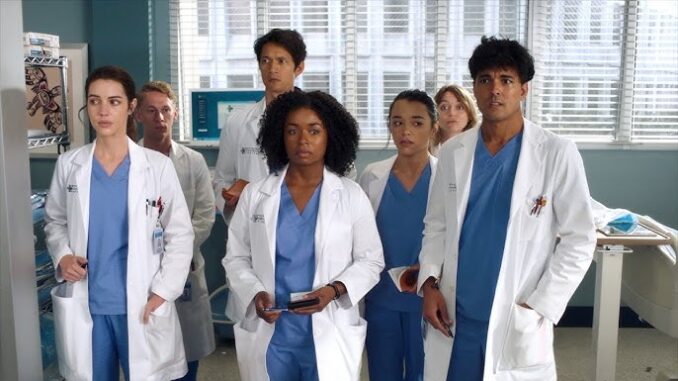
Surgical Cowboys Are Done; Bailey Resets the Standard
The operating room, once a stark arena where individual genius battled against the inevitable, has long held a mythic allure. At its heart, for decades, stood the "surgical cowboy" – a figure of formidable skill, undeniable charisma, and often, a terrifying disregard for convention. He swaggered into the theatre, scalpel in hand, a lone wolf whose gut instinct and swift blade were deemed more potent than any protocol. His operations were dramatic spectacles, his successes lauded as miracles, his failures, tragically, often brushed aside as the unavoidable casualties of a high-stakes game. But the curtain has fallen on this particular brand of heroics. The age of the surgical cowboy is done, consigned to the dusty annals of medical history by the precise, collaborative, and deeply ethical standard reset by the likes of "Bailey."
The surgical cowboy, in his prime, was a creature of singular vision. He operated on a personal frontier, believing implicitly in the infallibility of his own hands and the sharpness of his own mind. He might eschew extensive pre-operative diagnostics, trusting his palpation over an MRI, or dismiss the nuanced input of an anesthesiologist, confident in his own pacing. For him, the operating table was a stage, the patient an intricate puzzle to be solved by his personal brilliance. Collaboration was often seen as a weakness, a dilution of his singular focus. He cut, he closed, and then he moved on, leaving the meticulous, often mundane, details of recovery and follow-up to others. While some undoubtedly possessed an innate talent that allowed them to perform astonishing feats, their methodology was inherently high-risk, a gamble where the patient’s life was the ultimate stake. The lingering aroma of ether and the tense silence before the first incision were permeated not just by anticipation, but by the unspoken, precarious nature of such a personalized, unstandardized approach.
The demise of the cowboy was not a sudden act, but a gradual, inexorable shift driven by progress, accountability, and a profound re-evaluation of medical ethics. The advent of advanced imaging technology – the MRI that revealed every hidden lesion, the CT scan that mapped intricate vascular networks – began to erode the cowboy’s reliance on intuition alone. Evidence-based medicine emerged, demanding data, protocols, and measurable outcomes over anecdotal success stories. The very concept of patient safety evolved, shifting from a hope to a systematic imperative. Furthermore, the increasing complexity and specialization within medicine rendered the solo act untenable. The human body, revealed through microscopes and genetic sequencing, became an infinitely more intricate landscape than any lone adventurer could conquer. Legal scrutiny, too, played its part, demanding a level of due diligence and documentation that the cowboy’s freewheeling style could never provide. The operating room transitioned from an arena to a highly sophisticated laboratory, demanding collective intelligence over singular bravado.
Enter Bailey. Bailey is not necessarily a single person, but an embodiment of the modern surgical paradigm: the meticulous, the humble, the collaborative, the relentlessly ethical. Where the cowboy swaggered, Bailey approaches with quiet intensity, every decision underpinned by data, every action rehearsed, every potential complication anticipated. Bailey’s hands are still incredibly skilled, but they are guided by an arsenal of information: precise pre-operative mapping, real-time intra-operative imaging, and the constant feedback of a synchronized team.
The Bailey standard begins long before the first incision. It’s in the hours spent reviewing scans, collaborating with radiologists, consulting with internists, and engaging in honest, transparent conversations with the patient. During the surgery itself, Bailey is the conductor of a highly specialized orchestra, not a solo performer. The anesthesiologist’s nuanced control, the scrub nurse’s anticipatory precision, the circulating nurse’s vigilant oversight, the perfusionist’s delicate balance – all are integral, their contributions valued and acknowledged. Bailey speaks softly, directs clearly, and values the hum of well-oiled teamwork above any personal spotlight. The focus is no longer on the dramatic cut, but on the precise, minimally invasive pathway; on preserving function as much as removing disease; on a seamless recovery as much as a successful operation.
The standard set by Bailey is one of continuous improvement. Post-operative outcomes are meticulously tracked, complications are analyzed not as failures of individual genius but as opportunities for systemic learning. Research is embraced, new technologies are cautiously adopted, and the pursuit of knowledge never ceases. This isn't just about technical proficiency; it's about a profound respect for the human life under the knife, a commitment to reducing risk through foresight and collaboration, and an understanding that the art of surgery is now inseparable from the science and the ethics that govern it.
The surgical cowboy, for all his romanticized grit, belonged to an era of limited knowledge and fewer options. His time is past. Today, the sterile theatre hums not with the tension of a perilous gamble, but with the quiet confidence of precision, preparation, and shared responsibility. The standard set by Bailey – the embodiment of modern, patient-centered, collaborative surgery – ensures that the scalpel is wielded not by a lone hero, but by a highly integrated force, dedicated to the highest possible standard of care. And for every patient who lies on that table, vulnerable and trusting, that shift is not just an evolution, but a profound and life-saving revolution.
